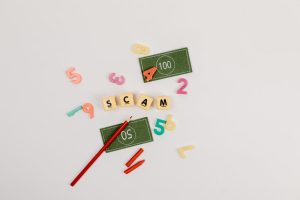When most people pick ETFs, they look at asset allocation first, maybe historical returns next—
but they often ignore the one thing that quietly eats into your profits: fees.
ETF Fee Comparison 2025: What’s Really Worth Your Money?
A 0.05% vs 0.75% expense ratio may not seem huge, but over years, it can create a massive gap in net returns.
And in 2025, the ETF market has officially entered the “fee war” era—
it’s not just about performance anymore; it’s also about transparency and structural cost design.
Let’s break down the major ETFs in the market and compare their actual cost structures head-to-head.
1. The 3 Hidden Layers of ETF Fees
Before diving into numbers, let’s clarify what makes up your real ETF investing cost:
- Expense Ratio
The annual fee deducted from fund assets. Usually between 0.03% to 1%. This is what shows up in fact sheets. - Bid-Ask Spread (Liquidity Cost)
If an ETF has low trading volume, you might pay 1–2% more just entering or exiting a position. - Tracking Error
Even if an ETF follows an index, poor management or market frictions can create a gap—another invisible cost.
2. 2025 ETF Expense Ratio Table: Side-by-Side
Here’s a snapshot of the most popular ETFs and their latest expense ratios, as of June 2025:
| ETF Name | Category | Issuer | Expense Ratio | Liquidity | Notes |
|---|---|---|---|---|---|
| VOO (S&P 500) | U.S. Equity | Vanguard | 0.03% | Very High | Lowest-cost large-cap exposure |
| QQQ (Nasdaq 100) | Growth | Invesco | 0.20% | Very High | Slightly higher fee, strong tech tilt |
| ARKK | Active Innovation | ARK Invest | 0.75% | Medium | High-cost, high-volatility play |
| IBIT | Spot Bitcoin | BlackRock | 0.25% | Very High | Among lowest in crypto ETF space |
| FBTC | Bitcoin Spot | Fidelity | 0.25% | Very High | Competing directly with IBIT |
| ETHA | Ethereum Spot | 21Shares + ARK | 0.30% | Medium-High | Cheapest ETH-focused ETF yet |
| BITO | Bitcoin Futures | ProShares | 0.95% | High | Futures-based ETF with high drag |
| DAPP | DeFi Thematic | VanEck | 0.50% | Medium | Volatile, sector-specific bet |
| VT | Global Equity | Vanguard | 0.07% | High | Great for global passive exposure |
| BITW | Multi-Crypto Index | Bitwise | 1.00% | Low | OTC-listed, highest cost in category |
3. The “Hidden Cost” Traps Most Investors Miss
Just picking the lowest expense ratio ETF doesn’t mean you’ll outperform. Here’s why:
3.1. Bid-Ask Spread Can Eat You Alive
Products like DAPP or BITW often trade far above their net asset value (NAV).
You could be 2% in the red just by entering the trade.
3.2. Rebalancing Frequency in Active ETFs
Actively managed funds like ARKK may look like they only charge 0.75%,
but turnover and trading can push real costs to over 1.2%.
3.3. Structural Drag in Futures-Based ETFs
Futures ETFs like BITO suffer from negative roll yield.
Even if the fee is “low,” these funds can underperform spot ETFs by 10% or more annually.
4. When “Low Fees” Are Good—and When They’re Not
| Investment Goal | Recommended Fee Range | Notes |
|---|---|---|
| Long-Term Passive (5+ yrs) | 0.03% – 0.10% | VOO, VT are ideal core holdings |
| Growth Sector Plays | 0.20% – 0.50% | QQQ, DeFi ETFs fit short-term thematic goals |
| Crypto Exposure | 0.25% – 0.40% | IBIT, FBTC are now fairly priced |
| Active, High-Beta Bets | 0.50% – 1.00% | ARKK, BITW—expect volatility and cost |
Bottom Line:
If you’re a long-term holder, go low-cost to maximize compounding.
If you’re chasing innovation or alpha, higher fees may be the price for flexibility and upside potential.
5. Real Questions from Real Investors
Q1: Aren’t Bitcoin ETFs still super expensive?
That was true in early 2024. But in 2025, IBIT and FBTC have dropped to 0.25%,
making them cost-competitive with equity ETFs.
Q2: Are active ETFs like ARKK worth it?
Only if you understand the risk. ARKK’s bets on AI, space, and genomics can skyrocket—or tank.
Not for risk-averse portfolios.
Q3: Are DeFi or thematic crypto ETFs worth including?
Sure—but keep them under 20% of your total portfolio.
They work best as “volatility enhancers,” not core positions.



